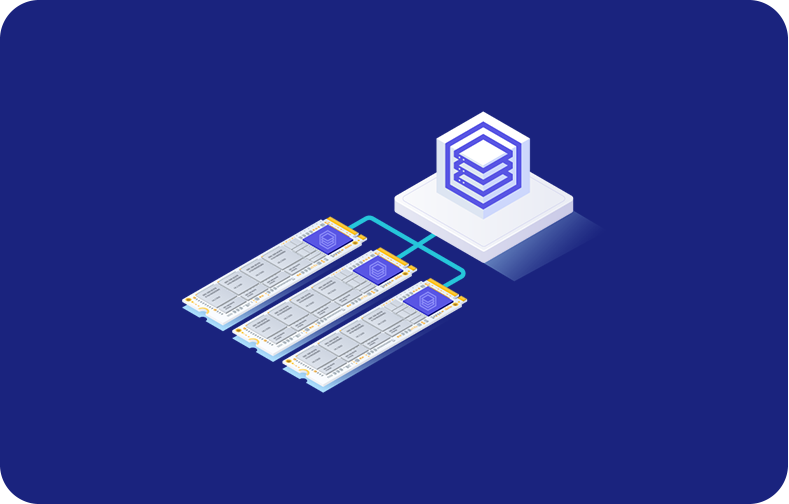ISPConfig Installation Guide

What is ISPConfig?
Before diving deep into the topic, let's have a basic understanding of ISPConfig!
It is an open-source control panel for hosting introduced for the Linux operating system. Plus, it is competent to manage multiple servers from a single control panel. It is widely identified for its extensive range of components that allow server administrators to handle web and email servers, DNS, and FTP accounts through its web-based UI.
ISPConfig is revered for its flexibility and has become an essential tool for many system administrators, harnessing the power of various command-line options and offering a basic setup for both novice and experienced users.
3 levels of ISPConfig
ISPConfig for server administrators

Server administrators find ISPConfig an indispensable tool due to its extensive capabilities to manage multiple servers and services such as nginx webserver, postfix dovecot rspamd bind, and the ability to fine-tune firewall records.
With ISPConfig, the root user can maintain root access to the operating system while delegating specific tasks to other users, which enhances security and operational efficiency.
ISPConfig for resellers

Resellers can utilize ISPConfig to manage a complete server environment for their clients. It allows them to create and manage user accounts, assign server resources, and set up unattended upgrades.
It ensures that each new client receives a freshly installed server with a current configuration, while the reseller maintains oversight through one control panel.
ISPConfig for webmasters

For webmasters, ISPConfig simplifies the complex task of managing websites on a VPS or dedicated server like VPSserver, the most reliable virtual service provider. It provides an auto-installer for popular software, allowing webmasters to deploy a website easily.
Additionally, the control panel offers a tools tab where webmasters can manage DNS records, use FTP ports, and oversee various other services integral to a functioning website.
How to Install ISPconfig on Linux

1. Download the installation file
Download the ISPConfig auto-installer from an authentic website. This downloaded file is updated regularly to help users get the latest Linux version, such as Ubuntu 22.04.
2. Extract the installation file
Once the ISPConfig installation file is downloaded, extract it using the appropriate command-line options for your operating system. This will prepare the files necessary for the installation on your server.
3. Install ISPConfig Control Panel
Begin the installation of the ISPConfig Control Panel by executing the install script from the command line. The process will prompt you for several details, including the MySQL root password and the ispconfig admin password, ensuring your control panel is secure.
4. Login to ISPconfig
Once you finish the installation setup, you can log in to your ISPConfig account using the default password and default username provided during the install ispconfig auto-install. This is the first and foremost phase of operating your servers through the ISPConfig auto-installer.
5. Install Mail Server and DNS Server
ISPConfig allows you to install additional services, such as a mail server and a DNS server. For example, you can install MariaDB postfix dovecot rspamd for mail services and bind for DNS services.
6. Verify a successful installation
Finally, verify a successful installation by checking the services that have been installed, such as rspamd bind jailkit roundcube phpmyadmin for spam filtering and webmail, respectively. You can also login to ISPConfig to ensure that all services are running and configured correctly.
ISPConfig Alternatives
While ISPConfig is a vigorous control panel, there are choices available that offer identical functionalities.
Some of these options include cPanel, Webmin, and Plesk, which also help with the administration of services on a server and arrive with their own set of command-line options for installation and administration.
Managing websites with ISPConfig on VPSSERVER
With ISPConfig on VPSserver, webmasters can manage their websites efficiently. The control panel's web-based UI qualifies for easy manipulation of website files, administration of email accounts, and fine-tuning of DNS settings.
Further, tools such as PHPMyAdmin can be installed via ISPConfig for database management, and the installation technique is facilitated with the auto-installer attribute.
Frequently Asked Questions
How do I install ISPConfig on Ubuntu 22.04?
To install ISPConfig on Ubuntu 22.04 using the ISPConfig auto-installer, you need to follow some basic steps and instructions provided on the official ISPConfig website for a hassle-free installation process.
What is the ISPConfig auto-installer?
It is a script to automate the installation process of ISPConfig. It also helps simplify the setup process by configuring different components like databases, web servers, and mail servers.
How can I update ISPConfig passwords?
You need to log in first to update your ISPConfig password. Then navigate to the user management section and modify your password.
Is it necessary to run 'apt update' before installing ISPConfig?
It is beneficial to run the "apt update" command before installing ISPConfig. It will ensure that the information on your package is compatible and updated.
Which versions of 8.0 MariaDB, Postfix, Dovecot are compatible with ISPConfig 8.0?
ISPConfig 8.0 is consistent with MariaDB 10.5, Dovecot, and Postfix. Ensure that you fulfill the prescribed version requirements.
Does ISPConfig support Rspamd, Bind, and Jailkit?
Yes, ISPConfig supports Rspamd for spam filtering, Bind for DNS record management, and Jailkit for enhanced security. These components can be configured within ISPConfig for a comprehensive hosting environment.
How can I integrate Roundcube and phpMyAdmin with ISPConfig?
You can integrate Roundcube and phpMyAdmin during the ISPConfig installation process. Follow the prompts to include these web applications, enabling seamless management of email and databases.
What considerations should I keep in mind when installing ISPConfig for managing websites?
When installing ISPConfig for managing websites, ensure proper configuration of DNS records, including setting up the necessary A, MX, and CNAME records. This is crucial for the correct functioning of hosted websites.
Can ISPConfig handle multiple websites on a single server?
ISPConfig is surely developed to control multiple websites on a single server. You can easily configure and administer various domains, ensuring efficient hosting for different web projects.
How does ISPConfig facilitate the management of DNS records?
It provides a user-friendly interface to control DNS records. You can remove or edit DNS records directly through the control panel.











